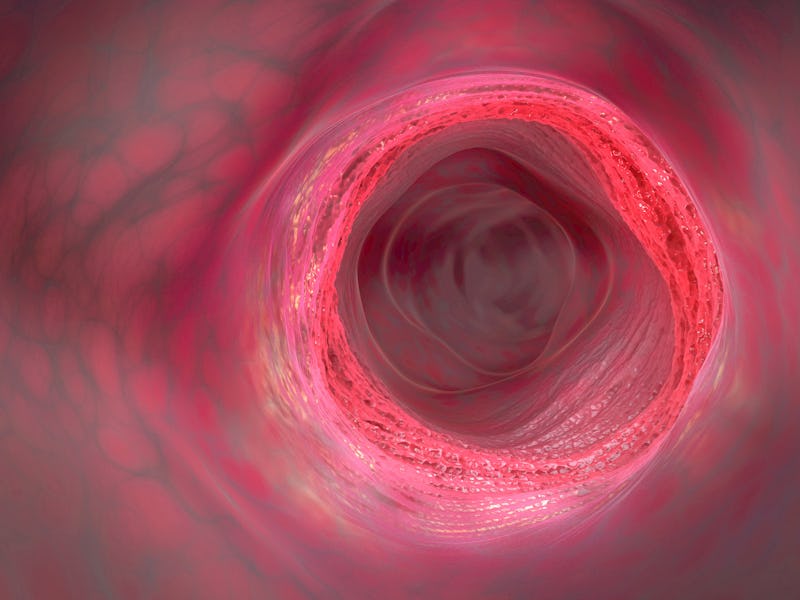Gwyneth Paltrow-Endorsed Ozone Therapy is "Fantasy at Best, Harmful at Worst,” Gastroenterologist Says
First jade eggs in your vulva, now this.

When it comes to passing gas, it's usually a one-way portal. However, a therapy that’s been called a “reverse fart” has been breaking wind since actor-turned-wellness-entrepreneur Gwyneth Paltrow shared on the podcast “The Art of Being Well” that she’s puffed ozone into her o-zone in the name of holistic health.
So, what is rectal ozone therapy, and does it actually work?
First, what is ozone?
Ozone (O3) is a molecule made of three oxygen atoms, usually existing as a bluish gas with a strong stench. It’s most commonly known as a layer of the atmosphere that protects us from deleterious ultraviolet rays. Sometimes it hangs around closer to Earth’s surface as smog.
The Food and Drug Administration (F.D.A.) describes ozone as toxic to humans and without any known medical application. Ozone is used to purify air and water, but that doesn’t mean it will do the same for one’s internal organs. In fact, according to the CDC, “exposure to ozone may cause headaches, coughing, dry throat, shortness of breath, a heavy feeling in the chest, and fluid in the lungs.” It can also cause damage if it gets in a person’s eyes or nose. Generally, it's recommended to keep it away from any hole that leads into the human body.
What is rectal ozone therapy?
Also known as rectal ozone insufflation, this therapy involves using medical-grade, ozone-producing equipment to blow this gas up your rectum in the name of detoxing. For those who’d rather skip ozone up their butt, the gas can also be introduced through the vagina or ears. They can also bask in ozone saunas, drink ozone mixed with oil or water, or receive ozone blood transfusions in which one’s blood is drawn, suffused with the gas, and then pumped back into the body.
Purported benefits of this therapy include reduced inflammation, increased oxygen saturation in tissue, and improved immune function, though none of these have even come close to being proven. One 2021 study claims that it’s successfully treated viral infections like hepatitis B, H.I.V., Ebola, and even health conditions associated with Covid-19. But this study looked at ozone therapy in only two patients with Covid-19, both of whom were hypoxic, meaning their bodies weren’t absorbing enough oxygen to function. Hypoxia can be a consequence of severe Covid-19 infection, leading those with the worst cases to require a respirator. This study concluded that rectal ozone therapy treated their hypoxia and got them off their respirators.
But medical professionals are skeptical of this therapy’s supposed benefits, and say there’s nowhere near enough convincing evidence that it does anything beneficial for our health. “This is fantasy at best and harmful at worst,” Eric Goldstein, a gastroenterologist in New York City, tells Inverse.
In 2020, a federal court forbid a wellness center in Dallas, Texas from marketing this therapy as Covid-19 treatment.
Is it safe?
Ineffectiveness is one thing; safety is another. There’s still not enough data to determine if this supposed therapy is safe. Goldstein says it’s never wrong to study something, but in medical interventions, safety is the top priority. “What’s inappropriate,” he says, “is recommending something without safety data.” This therapy is not approved by the F.D.A.
Goldstein says that some common therapies come with harmful side effects. Chemotherapy, for example, effectively kills cancer cells but also damages the body as a whole. The difference, he says, is that there is plenty of evidence showing that chemotherapy’s benefits outweigh its still considerable harms. We can’t yet say the same for ozone therapy.
On the other hand, he says he’ll recommend peppermint or ginger tea to his patients to quell their stomachs. While the data on these plants’ efficacy is lacking, at least imbibing them won’t cause damage.
In regard to rectal ozone therapy, Goldstein urges caution. He mentions he’s had one patient with inflammatory bowel disease who, five years ago, tried rectal ozone therapy, from someone who claimed to be the world’s best practitioner. “You could tell me you’re the world’s best unicorn trainer,” Goldstein tells Inverse. “That doesn’t mean unicorns are real.”
Editor’s Note: This article has been updated to reflect the fact that the patient of Eric Goldstein who had previously tried rectal ozone therapy has inflammatory bowel disease, not irritable bowel syndrome, as previously stated. We regret the error.
This article was originally published on